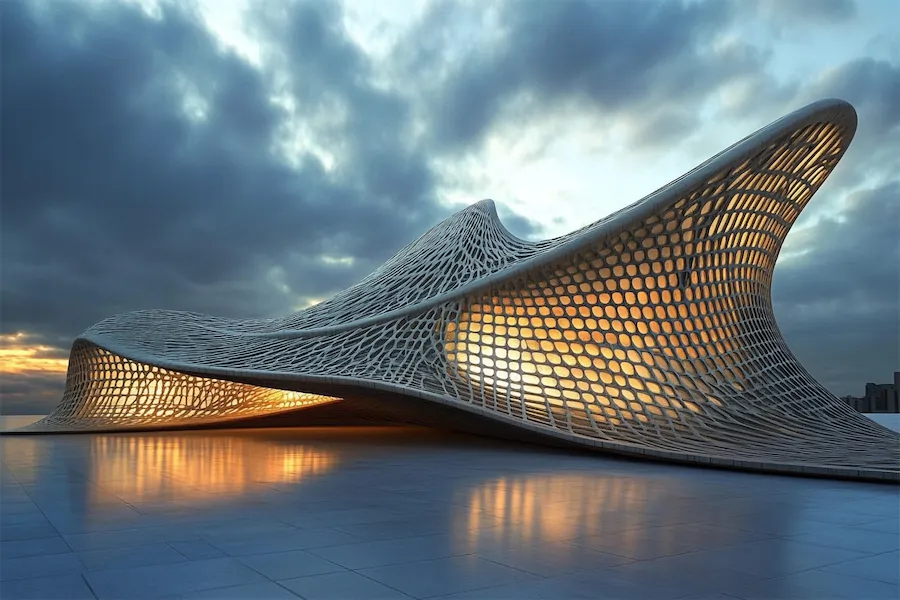A hyperbolic paraboloid roof, often referred to as a “hypar” roof, is a distinctive architectural form characterized by its saddle-like shape, featuring both concave and convex curves. This unique geometry is not only visually striking but also offers significant structural advantages, making it a popular choice in modern architecture.
History and Origins of Hyperbolic Paraboloid Roofs
The use of hyperbolic paraboloid structures gained prominence in the mid-20th century, as architects and engineers sought innovative designs that combined aesthetic appeal with structural efficiency. The form’s ability to span large areas without internal supports made it ideal for various applications, from pavilions to auditoriums.
Key Features of Hyperbolic Paraboloid Roofs
- Doubly Curved Surface: The hyperbolic paraboloid is a doubly curved surface, exhibiting both convex and concave curvature, which contributes to its saddle-like appearance.
- Ruled Surface: One of the remarkable properties of a hyperbolic paraboloid is that it is a doubly ruled surface, meaning it can be constructed using straight lines. This characteristic simplifies the construction process, allowing builders to use straight beams or members to create the curved surface.
- Structural Efficiency: The geometric properties of hyperbolic paraboloids allow for efficient load distribution, enabling the construction of thin-shell roofs that are both lightweight and strong. This efficiency often results in reduced material usage and cost savings.
Applications of Hyperbolic Paraboloid Roofs
Hyperbolic paraboloid roofs have been employed in various architectural contexts, including:
- Public and Commercial Buildings: Structures such as auditoriums, exhibition halls, and sports arenas have utilized hypar roofs to create expansive, column-free interior spaces.
- Religious and Cultural Centers: The unique form of hyperbolic paraboloid roofs has been used to symbolize modernity and innovation in churches, temples, and museums.
- Residential Architecture: Some avant-garde residential designs incorporate hypar roofs to achieve distinctive aesthetics and open interior layouts.
Considerations When Choosing a Hyperbolic Paraboloid Roof
- Complexity of Design and Construction: While the ruled surface property allows for construction with straight elements, precise engineering and skilled labor are essential to ensure structural integrity and aesthetic quality.
- Material Selection: Common materials for constructing hypar roofs include reinforced concrete, steel, timber, and even bamboo. The choice of material impacts the roof’s durability, maintenance requirements, and overall appearance.
- Maintenance Considerations: The unique shape of hyperbolic paraboloid roofs may present challenges in maintenance, particularly in ensuring water drainage and addressing potential weathering issues. Regular inspections and appropriate material treatments can mitigate these concerns.
Conclusion
Hyperbolic paraboloid roofs represent a fusion of mathematical elegance and architectural innovation. Their distinctive form and structural advantages continue to inspire contemporary designs, offering both aesthetic appeal and functional benefits. By carefully considering design complexities, material choices, and maintenance needs, architects and builders can effectively integrate hypar roofs into a variety of building types, creating spaces that are both beautiful and enduring.
